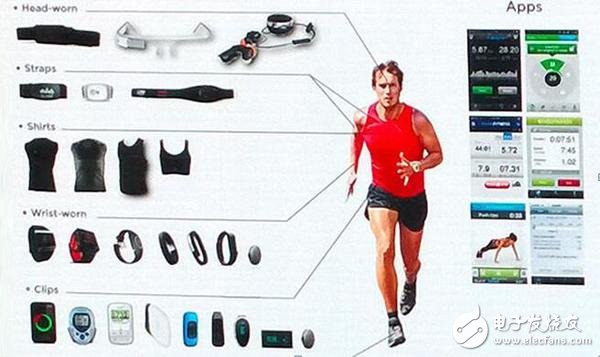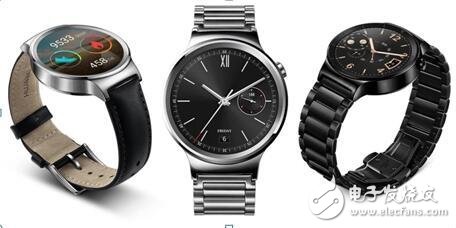Throughout the various consumer electronics exhibitions in recent years, smart wearable devices have become the biggest highlight of the show, and its limelight far exceeds smart phones and various flat products. From the perspective of market growth, smart wearable devices are replacing consumer technology products represented by smart phones, becoming the new fastest growing field with broad market prospects in the future. The wearable device audience is gradually expanding Wearables are not only a fashion expression, but an extension of our daily lives. From tracking health information to improving connectivity, we're creating a future where wearables are the primary source of more consulting we need. Just like any everyday accessory, today's wearable devices must be sufficiently sophisticated and stylish to ensure that the performance is complete, in order to evoke consumer interest, smart watches are the leader in this regard. A smart watch is a watch that has information processing capabilities and meets the basic technical requirements of the watch. In addition to the indicated time, there should be one or more functions of reminding, navigating, calibrating, monitoring, and interacting; the display modes include pointers, numbers, images, and the like. According to eMarketer, in 2015, the number of adult wearable devices aged 18 and over in the US has reached 39.5 million, including smart watches and fitness tracking devices – a figure that is 57.5% higher than in 2014. This growth will continue to exist in 2016, and the research firm says this number will grow to 81.7 million in 2018. This means that the audience size of wearable devices will expand further in the next few years. According to the latest report released by data analysis agency IDTechEx, the market size of wearable devices will exceed $30 billion in 2016 and will exceed $150 billion by 2026. IDTechEx's report covers 39 categories, including smart watches, fitness tracking devices, smart glasses, smart clothing, medical equipment, headphones, hearing aids and electronic watches. It can be seen that almost all consumer electronics. Smart wearable devices will become more and more grounded in the future. Each device represents a comprehensive and complete service, not just a relatively single function, which is bound to bring higher and higher users. Cost-effective, users' dependence on wearable devices will become stronger and stronger, and it may not be long before it will become a must-have for people. The development of high-end smart watches tends to "AMOLED round screen" The development of smart watches has reached two levels today. One is the square display camp represented by Apple Watch and Samsung Gear Live, and the other is the circular display camp represented by Huawei Watch and MOTO 360. The smart watch MOTO 360 with Android Wear is equipped with a low-voltage micro-power LCD round display. When the eyes are focused on the screen, it can be found that it has a "corner" and does not reach the retina screen. Watching the screen at close distances, the pictures and fonts in the watch will appear jagged and grainy, especially at the edge of the screen. Huawei's Watch uses the AMOLED screen, which not only does not cause this kind of problem of MOTO 360, but also makes the color more saturated and beautiful. When displaying dynamic and static images, people can obviously feel the picture is more vivid and vivid, mainly with AMOLED display. The contrast is higher than the normal LCD screen by nearly 100 times. On the issue of smart watch battery life, because the display screen is a large consumer of smart watches, its low power consumption design is especially important. Huawei Watch and Apple Watch are considering this point. Using AMOLED screens, the power consumption is reduced by 50%, which reduces the power consumption of the entire smart watch by 20-30%. This is another reason why Huawei Watch and Apple Watch choose AMOLED screen. Finally, it is worth mentioning that in design, smart watches are also very demanding for light and thin. After all, no one wants to wear a "thick brick" on their hands. At this point, the advantages of AMOLED are even more vivid, because it is reduced by more than 40% in thickness and weight compared to conventional LCDs. And AMOLED also has an ultra-wide temperature working range of -40 ° C ~ 80 ° C, which allows the terminal to adapt to use in a variety of situations, which also provides more creative and imaginative space for the design. Therefore, AMOLED screens will surely win more and more smart watch brands. The local smart watch market is booming With the gradual saturation of the smartphone market, major technology companies and many startups are eyeing smart wear, an area that has not yet been fully developed. In 2016, domestic smart wearable companies have launched their own products. It is a wind and water. Let's look at several representative products: Huawei watch Huawei Watch directly adopts a circular design with relatively large manufacturing difficulty, which may be the first feeling that Huawei Watch brings to us. On the screen, Huawei chose the more expensive AMOLED screen solution: equipped with a 1.4-inch AMOLED screen with a resolution of 400 & TImes; 400, a pixel density of 286 ppi, and an impressive 10,000:1 contrast ratio. It perfectly solves the problem that other watches have a clear black border under the display screen in order to reserve the position of the screen cable, which cannot be completely displayed in the circular area. High Temp Constant Power Heating Cable High Temp Constant Power Heating Cable,Self-Regulating Electric Heating Tape,Snowmelt Heating,High Temperature Electric Heating Tape JIANGSU PENGSHEN HIGH TEMPERATURE WIRE CABLE CO., LTD. , https://www.pengshencable.com
